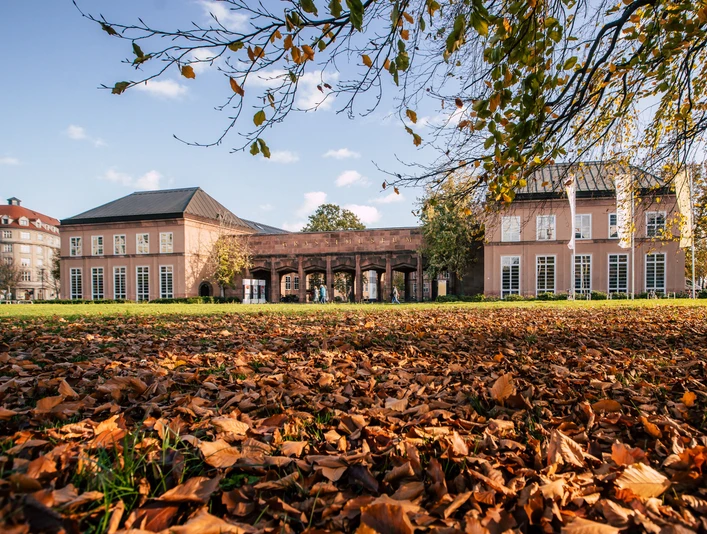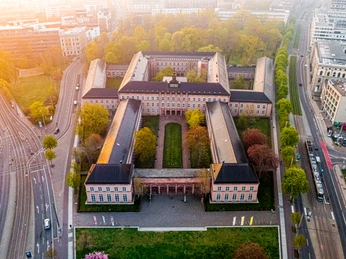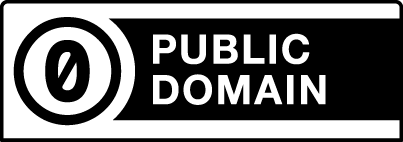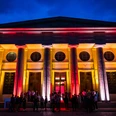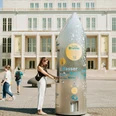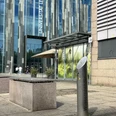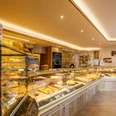With stylistic echoes of New Objectivity and Art Deco, the building is considered one of the few new museum buildings in Germany from the Weimar Republic era. Bauhaus lovers will find a very special gem here: the Josef Albers windows in the museum's main stairwell. Josef Albers, the Bauhaus master trained under Walter Gropius, designed the 18 flat glass windows in 1927. The windows, which are up to seven meters high, are made of mouth-blown flashed glass and are considered the largest glass design of the Dessau Bauhaus period. During the Second World War, the historical originals were destroyed, but the windows could be reconstructed true to the original using picture sources.
The Pillar Hall of the Grassi Museum is also architecturally significant, and after its reconstruction in 2010, has once again been restored to its former glory. The representative event room was built in 1927 in the Art Deco style. The Pillar Hall is considered one of the most beautiful interiors of German Art Deco. The contrast between the external Art Deco façade and the typical Bauhaus glazing of the Grassi museum highlights the different attitudes of the two styles.
Good to know
Openings
Feiertage: 10–18 Uhr
Nur das GRASSI Museum für Angewandte Kunst: Mi 12-20 Uhr
Am 24. und 31.12. bleiben alle Museen geschlossen.
Price info
Die Ständigen Ausstellungen im Museum für Angewandte Kunst und im Museum für Völkerkunde sind für alle kostenfrei.
An jedem ersten Mittwoch im Monat ist der Eintritt ins Musikinstrumentenmuseum frei. Die Sonderausstellungen der beiden anderen Museen kosten an diesem Tag jeweils nur 3 €.
Directions & Parking facilities
Mit dem PKW: In den folgenden Parkhäusern kann museumsnah geparkt werden: Parkhaus Gutenberg-Galerie (Gutenbergplatz 1a, 04103 Leipzig), Q-Park Augustusplatz (Augustusplatz 15, 04109 Leipzig) und Q-Park The Post (Grimmaischer Steinweg 5, 04103 Leipzig). Parkplätze gibt es ebenfalls am Täubchenweg, in der Querstraße, Inselstraße, Dresdner Straße, Talstraße und Salomonstraße.
Author
Leipzig Tourismus und Marketing GmbH
Organization
Leipzig Tourismus und Marketing GmbH
License (master data)
Leipzig Tourismus und Marketing GmbH
Nearby
